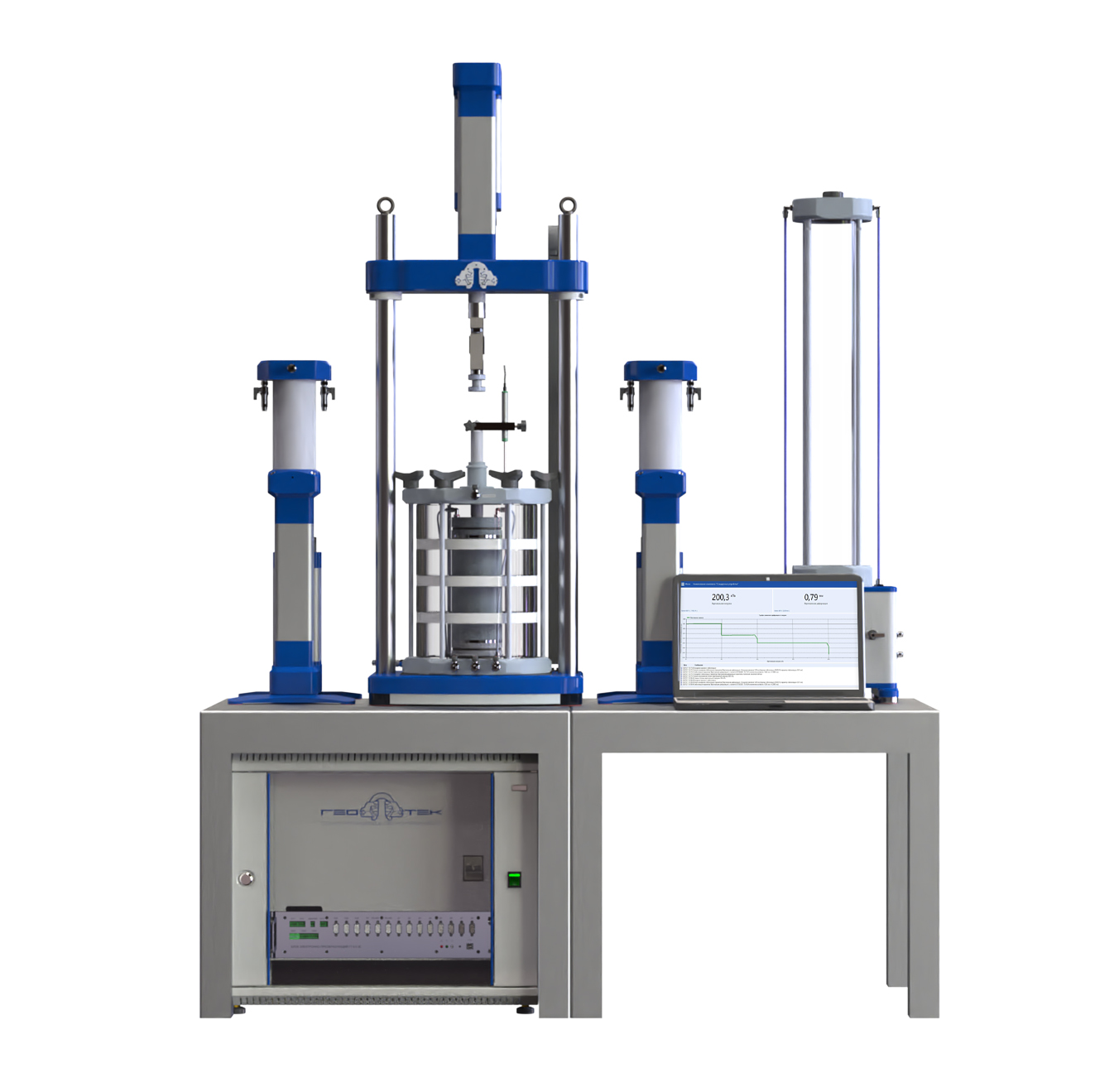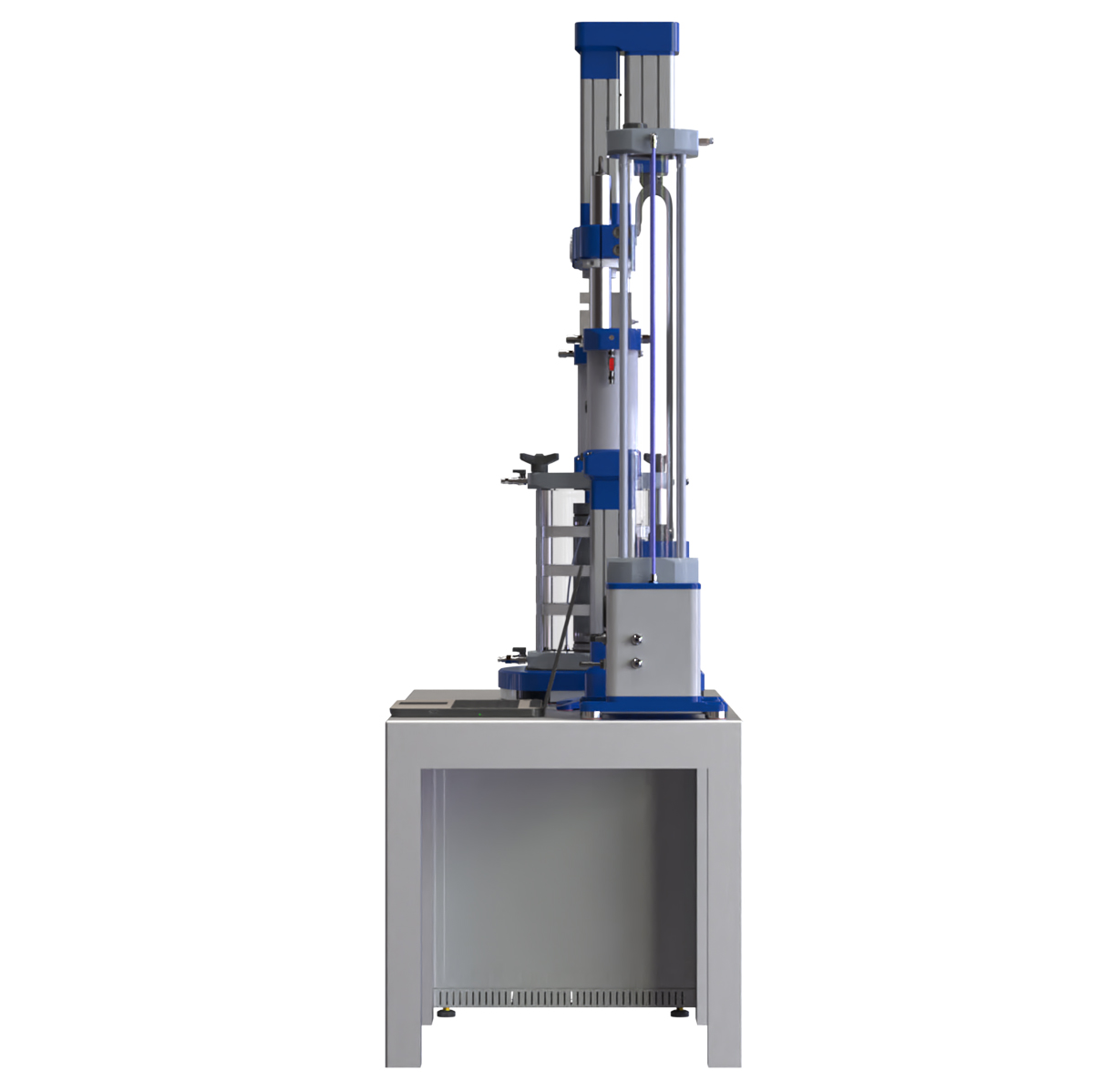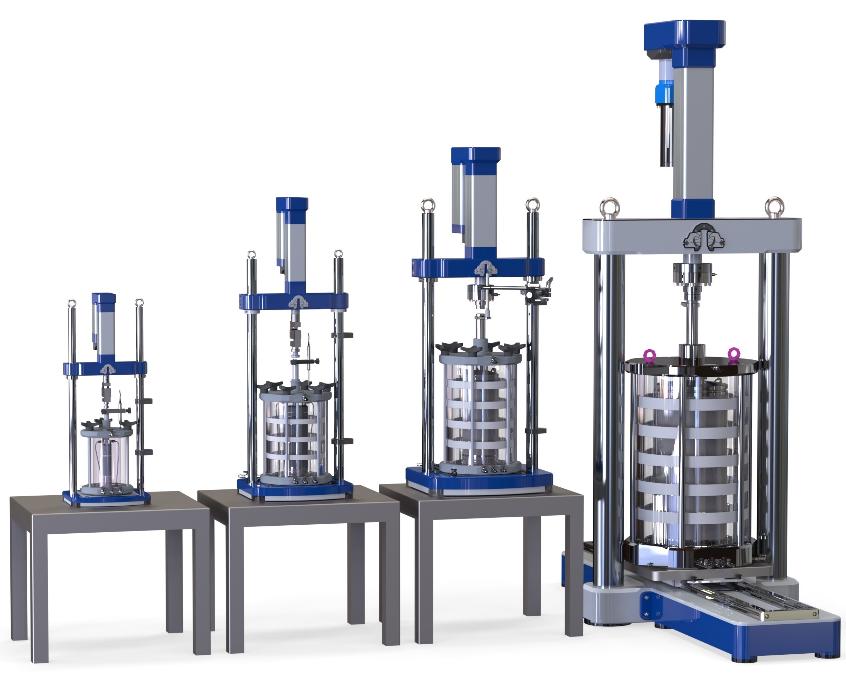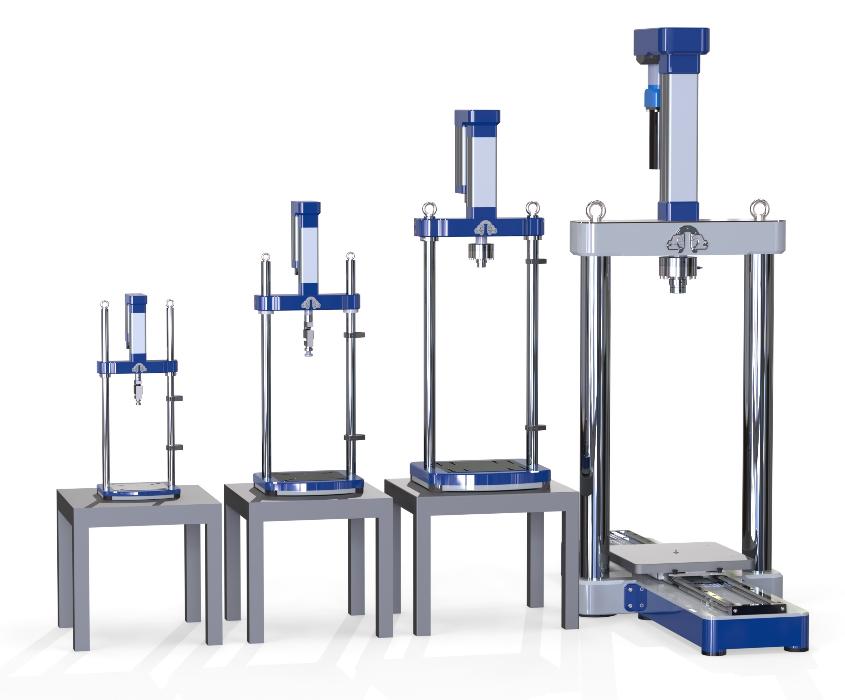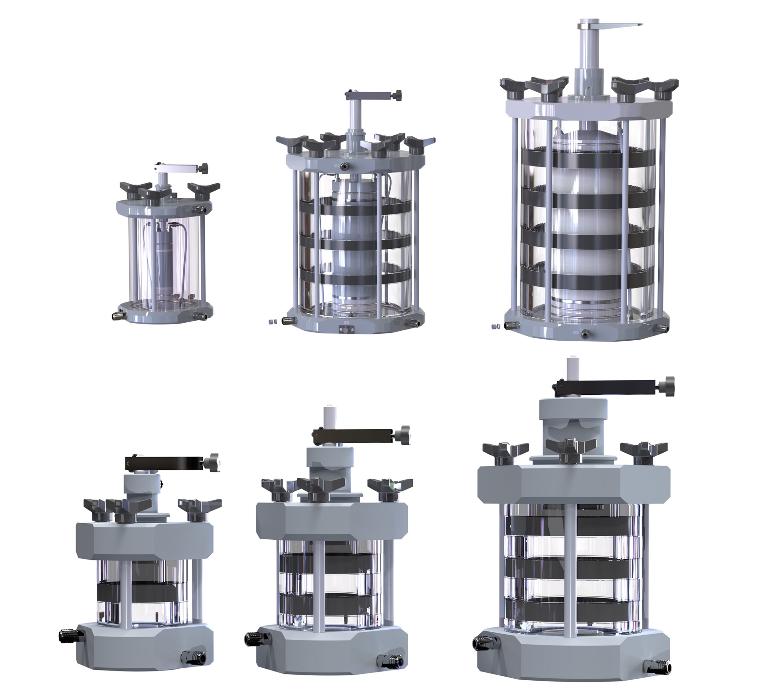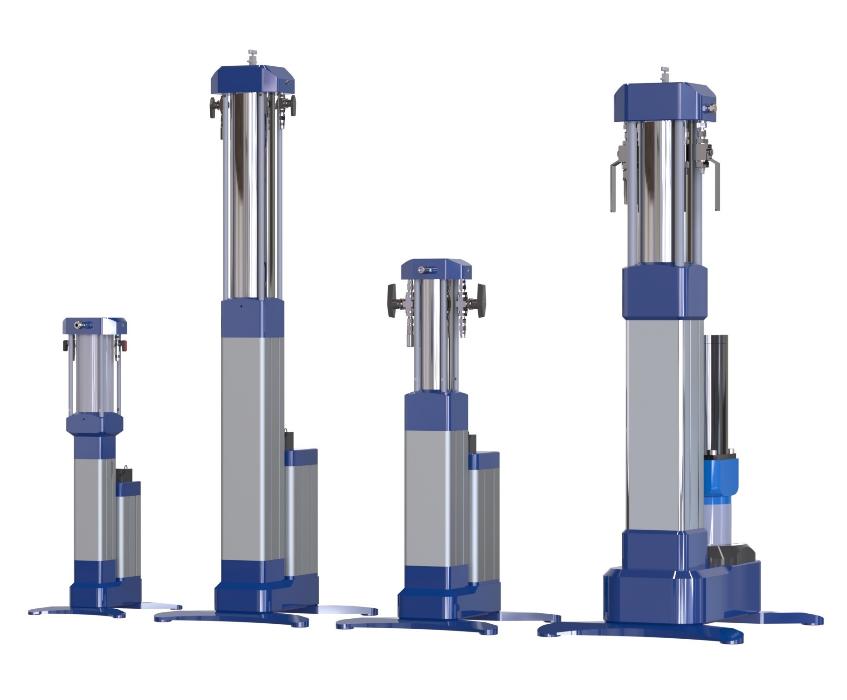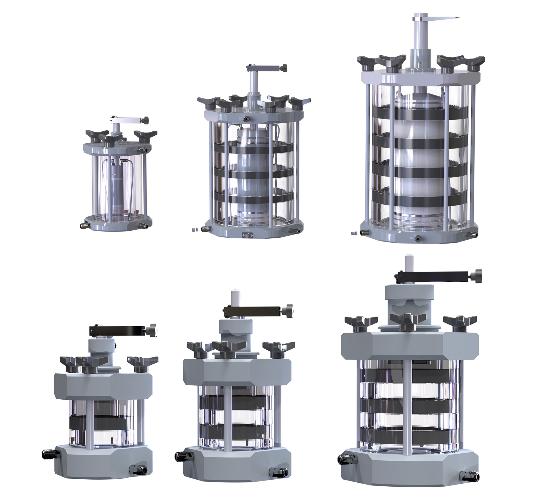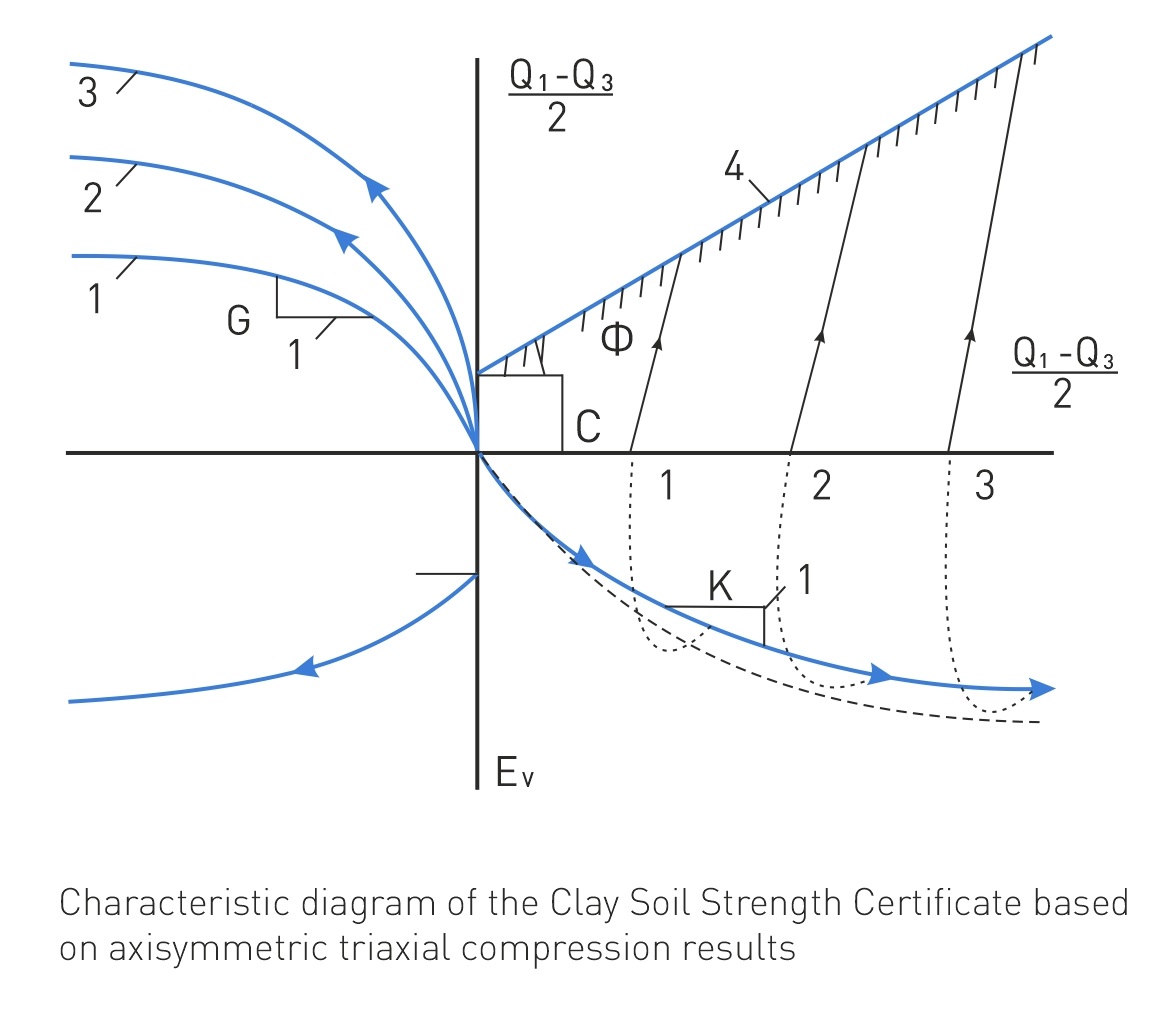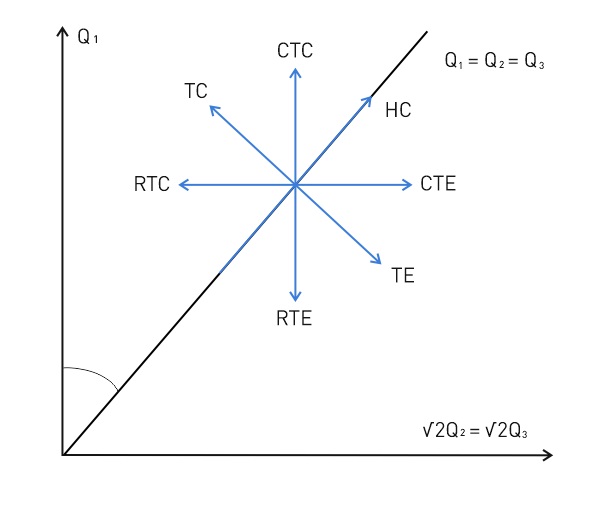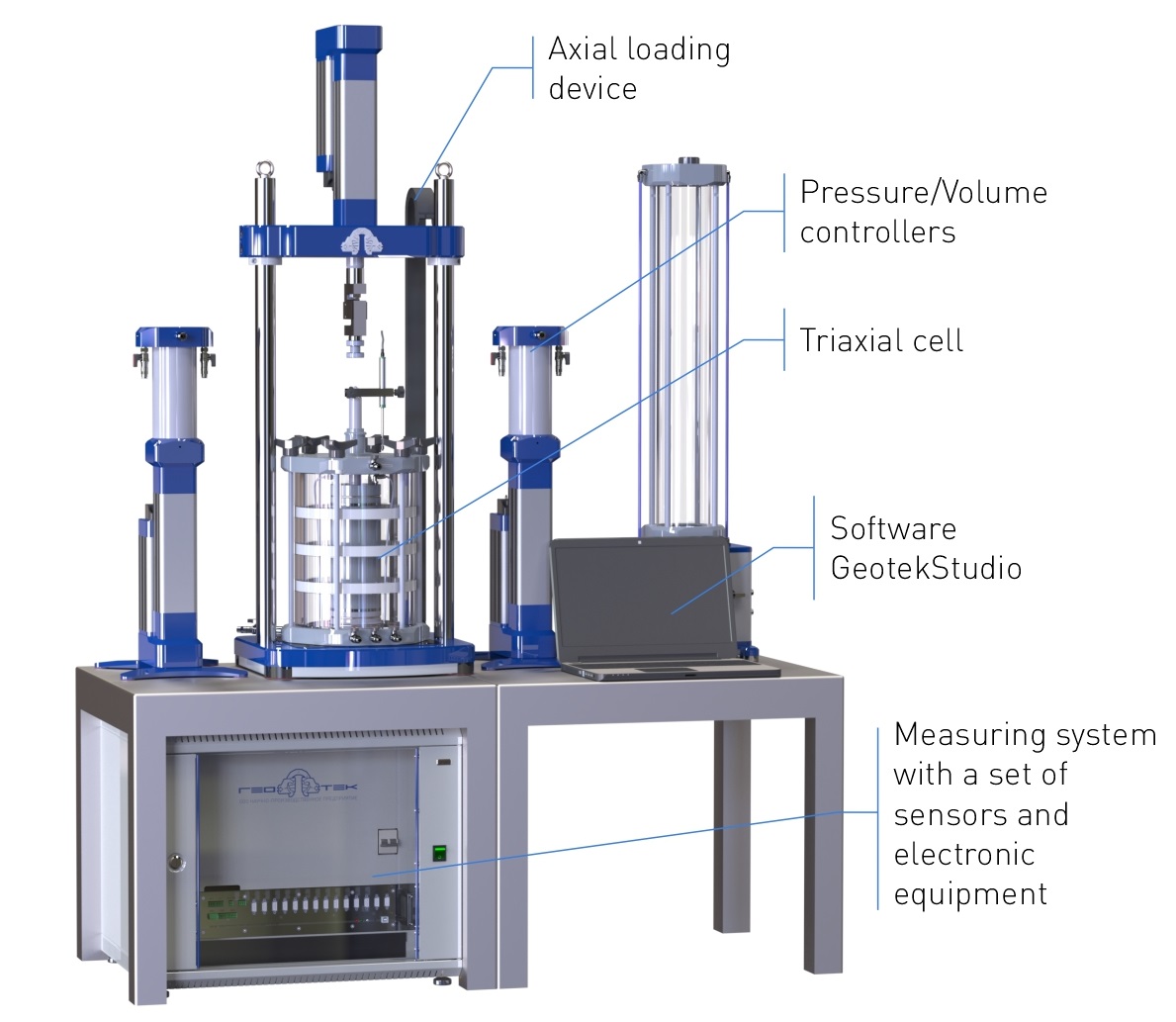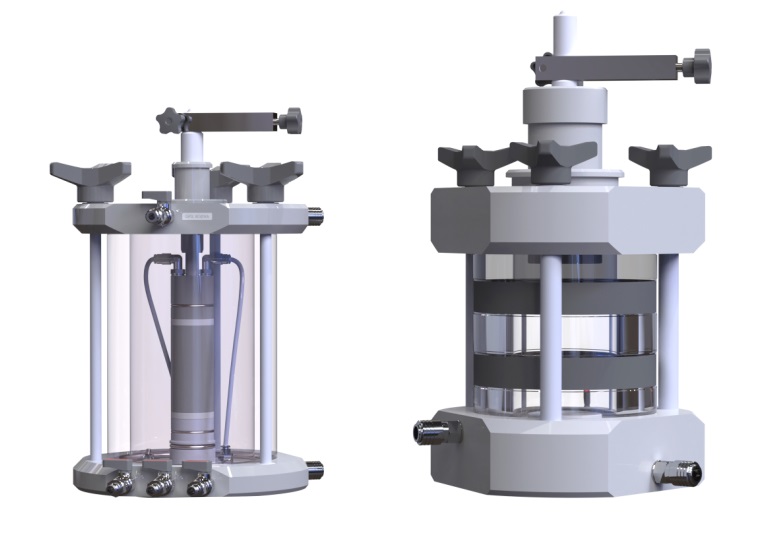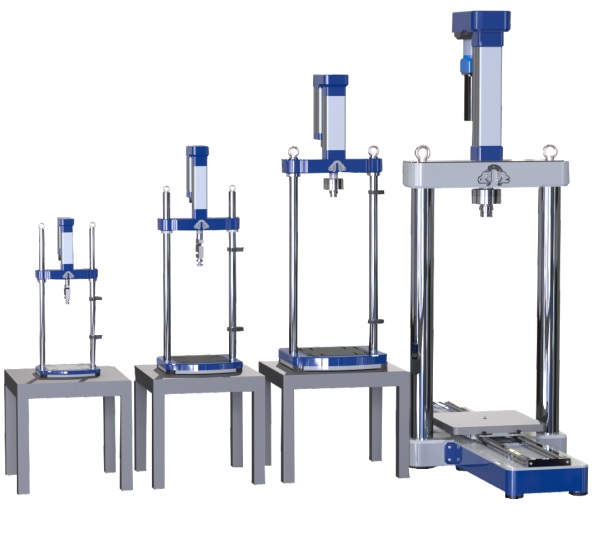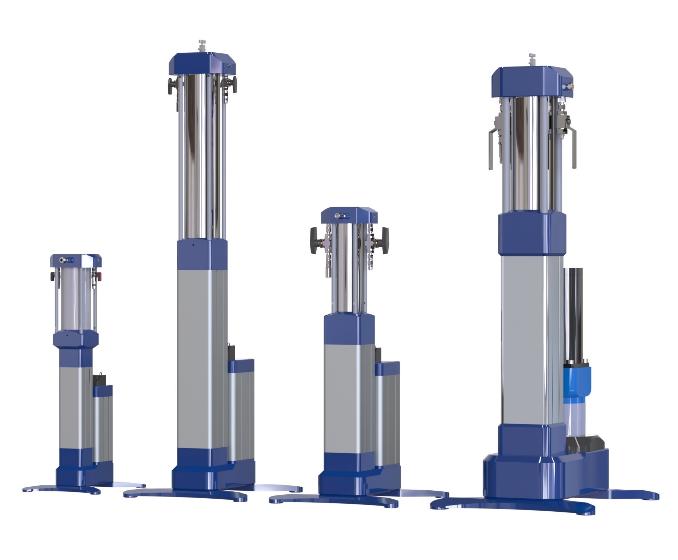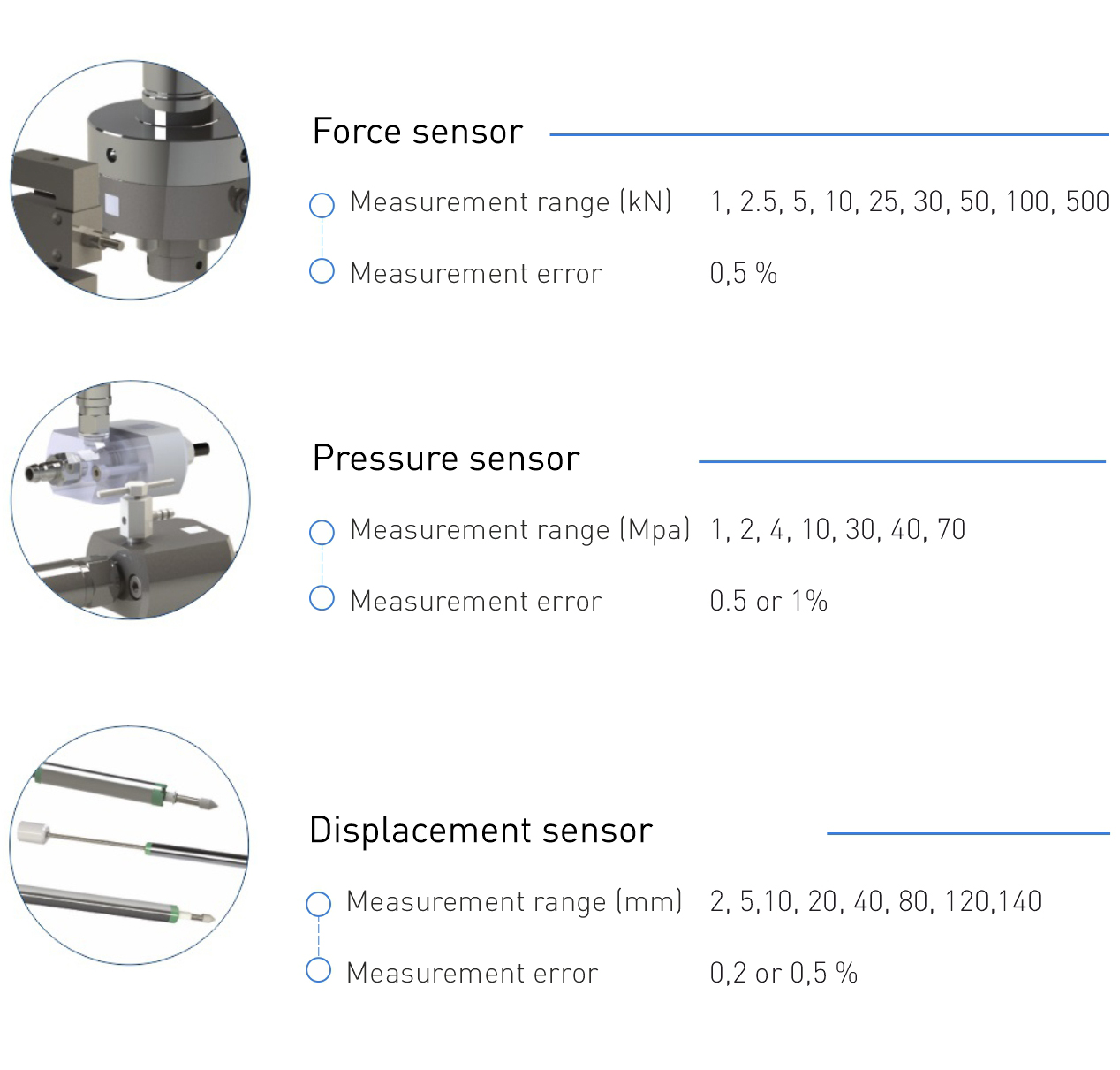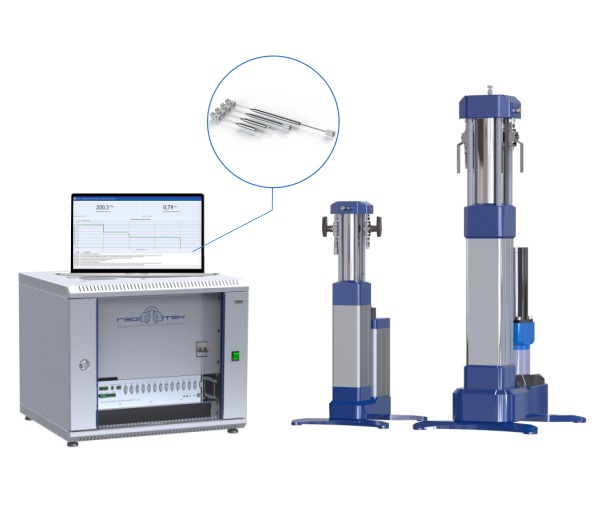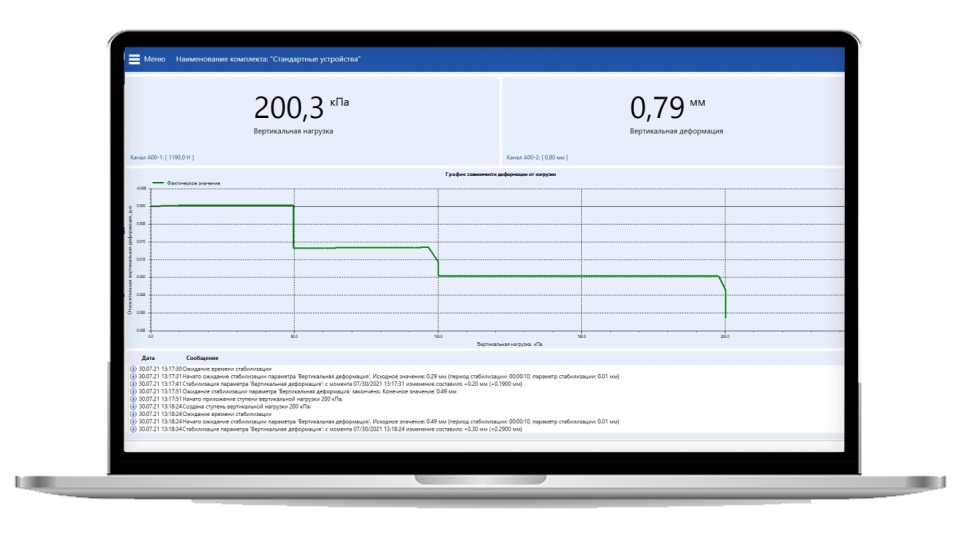- Tests according to ASTM, ISO
- Automated test mode
- Isotropic and anisotropic consolidation
- Implementation of various stress paths
- Static and kinematic loading with stress or strain speed control
- Water saturation of the sample by the phase composition recovery method and with pore pressure coefficient B control
- Measurement of pore pressure at one of the sample ends
- Back pressure control
- Control of volumetric strain of the sample
- Measurement of transverse strains in the middle of the sample height
- Modular design principle
- Software and hardware security system that minimizes the risk of injury to the operator and breakdown of the unit
- Сontrol panel for the convenience of preparatory operations.
Triaxial testing system of dispersed soils
|
Parameter |
|
|
|
|---|---|---|---|
|
Ultimate vertical load, kN |
10 | 30 | 100 |
|
Strain rate, mm/min |
0,0001 - 25 | 0,0001 - 50 | 0,0001 - 70 |
|
Maximum cell pressure, kPa |
2000 | 2000 | 2000 |
|
Maximum back pressure, kPa |
2000 | 2000 | 2000 |
|
Vertical displacements, mm |
20 | 40 | 80 |
|
Volumetric strain, ml |
250 | 500 | 1000 |
| Maximum sample diameter, mm | 50 | 100 | 150 |
The complex includes: power devices for axial loading; pressure/volume controllers for controlling cell pressure and back pressure; triaxial compression cells; measuring system with a set of sensors for test parameters control; specialized PC-based software for automating the testing process.
Triaxial tests are carried out in special triaxial cells.
The cells provide the transfer of lateral pressure and vertical load to the sample. Free deformation of the sample as a result of isotropic and deviatoric loading.
The cells also provide free filtration of the pore fluid and measurement of the pore pressure at the contact with the sample.
The cells differ in the size of the test sample, as well as the types of structures: Type A cells - volumetric compression cells; Type B cells -cells of radial compression. Cell selection depends on sample size and test method.
The load can be applied in steps, with axial stress control, or continuously at a constant rate of axial strain.
The vertical load is controlled by loading devices with maximum force of 10, 30 or 100 kN with electromechanical control.
The choice of loading device depends on the sample strength and cross-section area.
Lateral compression of the sample in a latex membrane is carried out to simulate the volumetric stress-strain state. Compression is carried out by creating fluid pressure in the triaxial cell.
To restore the phase composition or complete water saturation of the sample, it is necessary to control the back pressure in the pore space of the sample.
The pressure in the cell and the back pressure are controlled by pressure/volume controllers - special piston pumps with electromechanical control.
Pressure/volume controllers for triaxial testing of dispersed soils are produced with a capacity of MPa and a volume of 250, 500 and 1000 ml, depending on the volume of the test chamber.
In the process of triaxial testing, the measuring system measures the vertical load and cell pressure, as well as the pore pressure, axial and transverse deformations of the sample in the presence of an additional sensor.
The axial load is measured using submersible or external force sensors with a measuring range of 10, 30 or 100 kN, depending on the device power and the cell type.
Measurement of the sample axial strain is carried out both on a full and a local basis using axial extensometers. As a means of measurement, linear displacement sensors with a measuring range of 2, 5, 10, 20, 40 or 80 mm are used. The choice of measurement range depends on the size of the sample and the method of measurement.
Measurement of the sample transverse strain is carried out in the middle part of the sample using radial extensometers. As a means of measurement, linear displacement sensors with a measuring range of 5, 10 and 20 mm are used. The choice of measuring range depends on the dimensions of the sample and the method of measurement.
Measurement of lateral and pore pressure is carried out using pressure sensors with a measurement range of 2.0 or 4.0 MPa. The sensors are made in a special housing and equipped with fittings to remove air from the channels of the triaxial cell.
The control of the sample volumetric strain is carried out using pressure/volume controllers by measuring the volume of injected/displaced cell fluid or by the volume of injected/displaced pore fluid under the condition of complete water saturation.
Electronic equipment as part of the Pro-line testing system is a complete and cost-effective solution specially designed to solve the problems of data logging and control of power devices with active feedback.
Electronic blocks, used for static and low-frequency triaxial tests, perform the following tasks:
- control of axial loading actuators (drives), based on stepper and servo-stepper motors (up to 3 axes simultaneously);
- datalogging from force, pressure and displacement sensors (up to 8 sensors simultaneously);
- control of pressure control devices using pneumatic valves (up to 2 devices simultaneously).
Special software GeotekStudio is used to control the process of triaxial testing and provides the user with a set of preset algorithms for performing complex types of tests.
A complete picture of the testing process is implemented in graphs, sensor readings and calculated physical quantities and is shown using a set of graphical interfaces.
For special tests, the program provides the opportunity to develop your own sequence of commands to perform a unique type of test (write your own algorithm). Such algorithms are developed directly in the built-in environment for the development of algorithms in the GeotekStudio program in a block-graphical way.
- Installation of equipment by our specialists in your lab
- Software installation
- Running equipment in test mode
- Carrying out maintenance
- Troubleshooting under warranty
- Staff training to work with software and equipment
- Providing training material

